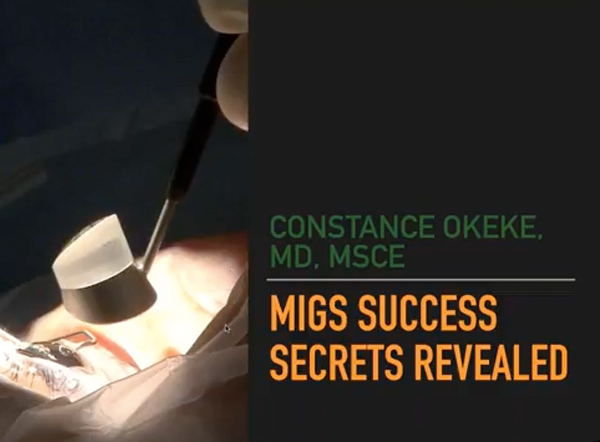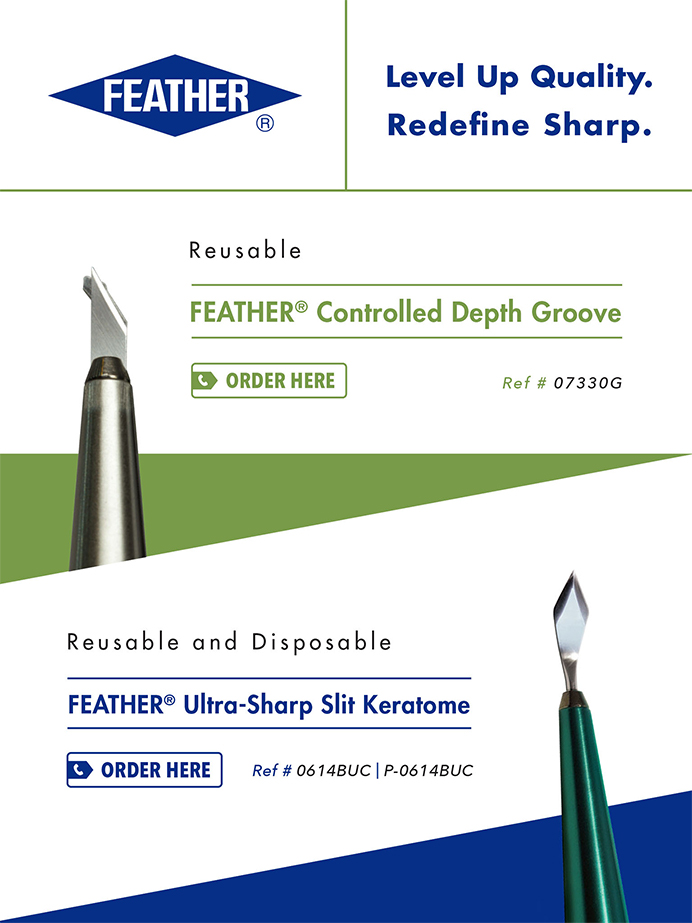Optometrists often act as the initial point of contact between patients and ophthalmic surgeons—as well as the initial source of information for patients. As such, it is crucial for ODs to be fully informed about the latest ophthalmic surgery techniques. Case in point: Microinvasive glaucoma surgery (MIGS). MIGS arose in response to the need for a way to reduce intraocular pressure (IOP) in a safe and effective way, with fewer potential complications than traditional surgical techniques.
With MIGS, patients have the option of accessing a less invasive measure to treat their glaucoma while also having great potential of fewer medications to control the disease. Many of the techniques designed for MIGS are labeled to be used at the time of cataract surgery, though several can be used independent of cataract surgery.
At our clinic, we surveyed patients who were being evaluated for cataract surgery and were also taking one or more medications for glaucoma. We asked them, “If you were given the option to reduce or eliminate your need for glaucoma drops with a procedure that could be performed at the same time as cataract surgery, would you be interested?” Many patients said they were doing fine with their eye drops. Still, 86% said they would be interested in knowing more about such a procedure.
Just as it is important to let your cataract patients know about premium IOLs even though they are not covered by insurance, it is important to let glaucoma patients know about MIGS options, which at times are covered by insurance only if they are used in conjunction with cataract surgery. If you assume that patients will not be interested in premium IOLs because of the out-of-pocket payment factor, you do them a disservice because some will happily elect to pay. Similarly, if you assume that glaucoma patients will not be interested in reducing their number of glaucoma drops, even if they are stable and doing fine, you are not giving them a MIGS choice.
MECHANISMS OF ACTION
There is a plethora of MIGS options and mechanisms of action, which means eye care providers can individualize care for individual patients.
The earliest MIGS options relied on partial or complete removal of the trabecular meshwork (TM). The »Trabectome (NeoMedix) was the first device that achieved IOP reduction via TM removal. Devices that perform partial or complete TM removal include the »Kahook Dual Blade (New World Medical) and the »Trab 360 (Sight Sciences). One other technique that uses this approach, called gonioscopy-assisted transluminal trabeculotomy or GATT, is performed using the iTrack Microcatheter system (Ellex). These procedures can be done alone or combined with cataract surgery.
Another approach is to bypass the TM, directly accessing the canal of Schlemm. The »iStent (Glaukos) device uses this approach, and is performed only with cataract surgery.
Dilation of the canal of Schlemm using viscoelastic can performed with the Visco 360 (Sight Sciences) or by performing ab-interno canaloplasty, or ABiC, which is also performed using the iTrack Microcatheter system. These procedures can be done alone or combined with cataract surgery.
Two more approaches are used by the most recently approved MIGS technologies. The »CyPass Micro-Stent (Alcon) shunts aqueous to the suprachoroidal space, allowing for mechanical access to the uveoscleral outflow pathway. It is performed only with cataract surgery. The »Xen Gel Stent (Allergan) shunts aqueous to the subconjunctival space via an ab-interno approach, thus allowing for creation of a bleb without cutting the conjunctiva. The Xen is the only MIGS implantable device to date approved for use independent of cataract surgery. It is labeled for surgical management of refractory glaucomas.
GONIOSCOPY AND REFERRALS
The need to be comfortable with gonioscopy cannot be over emphasized. ODs need this skill to identify MIGS candidates and to evaluate them postoperatively. An ideal candidate will have an open angle without synechia, will have early to moderate glaucoma, and will be taking one to three IOP-lowering medications. Performing gonioscopy offers a financial benefit, as well, given that it is a reimbursable procedure.
Be sure to find out which glaucoma surgeons and cataract surgeons in your area have adopted MIGS, and which techniques or devices they favor. If possible, ask if you can watch a procedure being performed. This allows you to better appreciate the surgical nuances, and to better understand what the patient’s eye looks like when the procedure is complete. The latter will help with your postoperative evaluations.








